
Hope Lives In a School Called Policarpa – Defeating Child Poverty Near Santander De Quilichao, Colombia
Hope is the thing you see in the faces of the students here. Inside a small school called Policarpa, in an area of Colombia called Santander De Quilichao, where domestic heroin use rages and gangs and guns are very real threats to children and entire families. But here, inside this school the children celebrate Amor Y Paz Month – Love and Peace Month.
Table of Contents
What Hope Looks Like Here
Words hang in Spanish on the pillars in the school. Loosely translated they read: Tolerance, Love, Punctuality, Respect, Friendship. It is September and I have flown to South America with World Vision Canada to see the work they do, to chronicle the stories of sponsored children and youth and learn more about how this organization battles child poverty. I plan to find some children, a couple, sponsored by World Vision Canada, sponsored by people at home, maybe even some who live in Ontario, near me who potentially helped improve a child’s life in this area of Colombia.
Instead I find Policarpa School.
[tweetthis]Santander De Quilichao is about a 45 minute drive from Cali, in the south of Colombia #TMMWVC[/tweetthis]
A Short Drive from Cali
Santander De Quilichao is about a 45 minute drive from Cali, in the south of Colombia. It is an area that is considered the second worst Colombian city for heroin use. Heroin use? That’s right. In the wake of cracking down on narco-trafficking and cleaning up the international drug export business that stemmed from Colombia a much quieter evolution has taken place in several places in the country. Domestic heroin use is a big problem here. Santander De Quilichao and Medellin are the two biggest regions of Colombia struggling with this domestic heroin problem.
How They Work
Where heroin grows, crime follows, and guns and gangs and drug dealers who prey on kids. In this area, this problem has decimated the population. Dealers hang out and wait for children and they reach out as young as ten, giving them heroin for free. A small, lasting, gift that breeds addiction and then suddenly they are required to pay for their drugs.
Crime Follows
Child trafficking, gangs, guns, crime, child poverty and the conscription of children as soldiers in paramilitary groups all follow. These are the monstrous side effects borne from giving ten-year-olds heroin for “free.”
The History of the Country
Colombia is a country that has a well known tragic history of narco-trafficking. Canada and the United States made the country high priority in the war on drugs at home and they succeeded in curbing much of the international drug trafficking problem here. But many people disappeared, narco-traffickers were imprisoned, and many people who were working in that illegal economy were suddenly unemployed, without skills that might translate into a job. As well, a growing psychological rift was unavoidable.
During the years when narco-traffickers took the reigns, many families were forced from their homes. A gang might show up on Monday morning and advise entire families to leave their homes overnight or they’d be killed. Many left the lands their parents owned and set up small illegal settlements with scraps of wood, tarps and plastic – whatever they could find. Child Poverty here became a massive foe as a result.
Poverty Is a Formidable Foe
This history has scarred the country, some say for good. Some say Colombia has indeed made great progress with help of organizations such as World Vision Canada and their local counterpart Vision Mundial Colombia, but they fear the scars are too deep and the gap between rich and poor so wide that nothing will ever remedy this completely. There will always be a gap, according to that group and right now in a country with 8 % unemployment and a huge amount of underemployment too, it is still too easy for youths to be lured into the promise of money and the illusion of glamour when confronted by gangs and drug culture.
Hope in Faces of Children
But here in this community hope lives inside a school called Policarpa. You see it when the kids surround you jockeying to be in a photographer’s pictures. You see it when the littlest ones hang off of the older children’s biceps at lunch time, craving a quick thrill on a bicep curl. And you cannot help but see it in this empty field where the local high school students spend two hours each day building what will become a gymnasium.
Today the high school students are levelling the floor and measuring the angles and making certain the basketball nets that are standing here as a gift from World Vision, remain standing throughout the process. Each high school student in this area is required to spend two hours a day doing something technical like this. A group of 15 and 16 year olds are here as part of civil constructions class. Their teacher Huber Quibano Sanchez, is an engineer and he oversees their work in the Policarpa school field.
While the high school students work in the blazing hot temperatures and the teachers tidy up the rooms for lunch break, one by one a few random people begin to show up in the field. The language barrier is bridged by a translator and I question why they are here. Are they picking children up, or are they volunteers?
Ruth
Ruth, is a grandmother and she builds perspective. This is a place where World Vision Canada had an active ADP (area development program) up until a year or two ago. The ADPs last 15 to 18 years. They are set up in the most vulnerable areas of Colombia. A mere 15 years ago this space was a war zone of sorts. This is an ADP after World Vision has done their work building hope, relationships and programs.
There are still many guerrillas living in settlements here, but 15 to 18 years ago the streets were more dangerous than they are now. Families often had hatred for other families. It was not uncommon for a family whose home was stolen by guerrillas as spoils in a drug war, to be situated inside a new community right beside families containing members who had been involved in very gangs that forced them from their land. A volatile neighbourhood dynamic.
A Thriving School
Now this school is thriving. The children have a quality space to grow and get an education. It is, Ruth says, the only school in the Santander De Quilichao area that has basketball nets and a space to play.
[tweetthis]Many of the children here are sponsored by Canadians #TMMWVC[/tweetthis]
Child Sponsorship
Many of the children here are sponsored by Canadians. The community has many people working together to build a better neighbourhood for the children and youth. When an ADP leaves an area, they leave in their wake an infrastructure of people and relationships that take over the work that has been started. It is pride and dignity and hope and a future all rolled into one. It is not one success story; nor is it simply one sponsored child story. Policarpa School and the surrounding community is evidence World Vision Canada builds entire communities.
As she keeps talking eventually Ruth, 66, shares more. Her grandson was sponsored by World Vision Canada. She has come by today to say thanks. Like many here, she takes pride in the fact they have taken what they were given, adapted the tools and used them for life, making better homes and better lives.
Gratitude
“We want to thank World Vision because the children here are happy.”
The children and the parent council take pride in making this school better every year. They are fund-raising on their own to finish the yard/gymnasium, sports field area.
“My grandson was sponsored. He participated in all sorts of after school activities with other children. It kept him from drugs. It kept him off the streets. Together we also participated as a family. We learned how to treat each other here and communication got better.”
The Gifts of Sponsorship
These are the gifts that sponsorship creates. Schools, communication, futures, fields, dreams and hope. They are reflected in each of the faces here. Individually, they are dozens of hopeful personal stories of lives transformed. Collectively they are all pieces of a puzzle that knit together to form the portrait of a resilient community.
This is the second story in my series of posts live from Colombia. Many of the stories centre on the topic of child poverty in areas of this country. The first post is here: The Briefing
Sponsor a Child Now
Sponsor a child and change a community like Santander De Quilichao, Colombia. For more information visit the main World Vision site.
You can also follow World Vision on twitter at http://www.twitter.com/worldvisioncan/
and on Facebook: https://www.facebook.com/WorldVisionCan
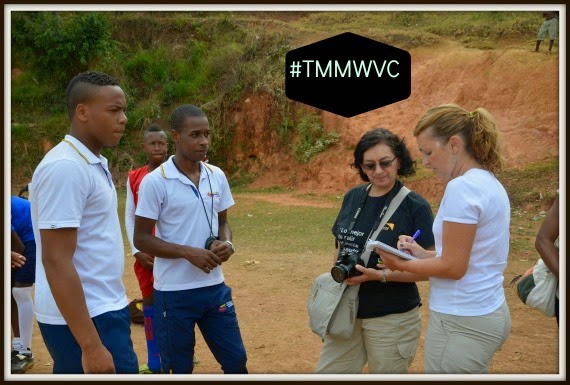
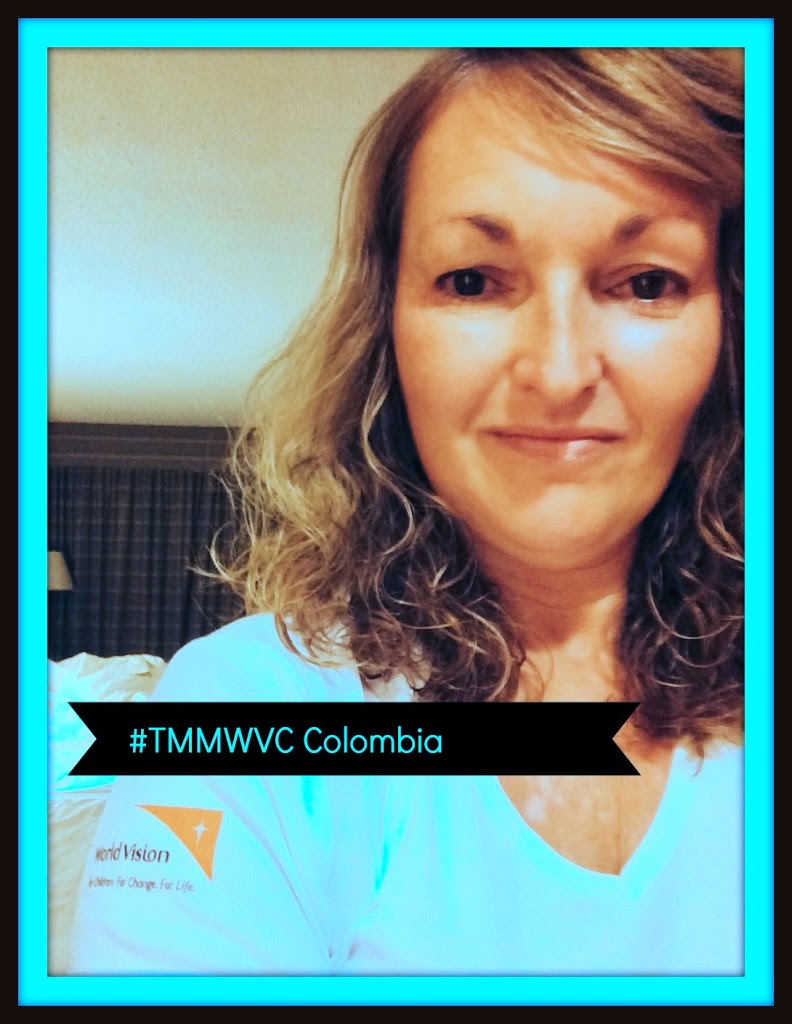
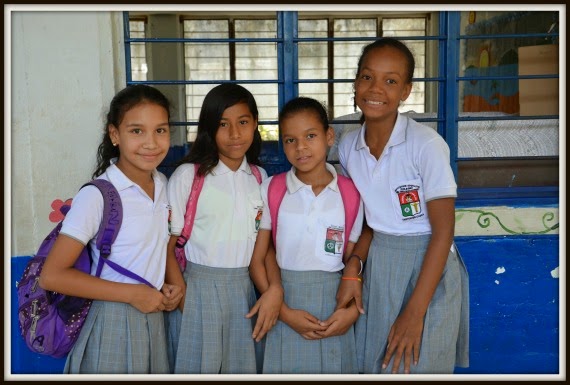
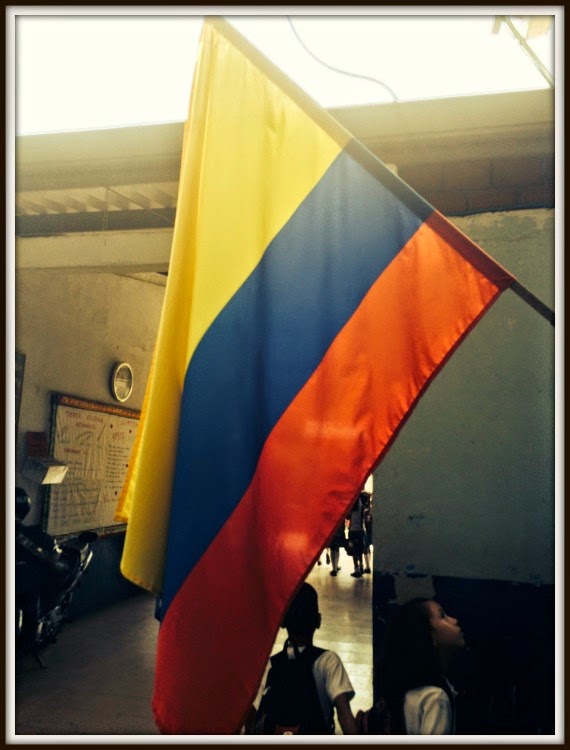

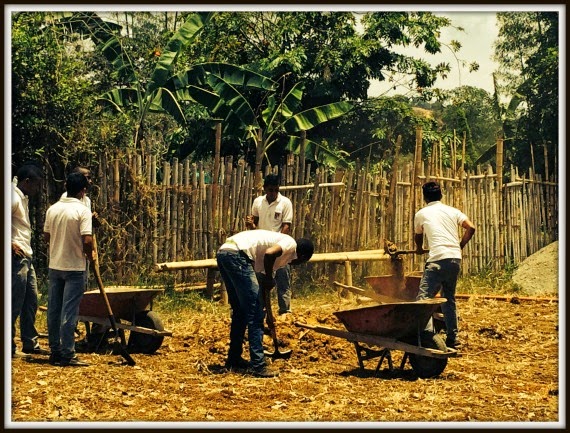
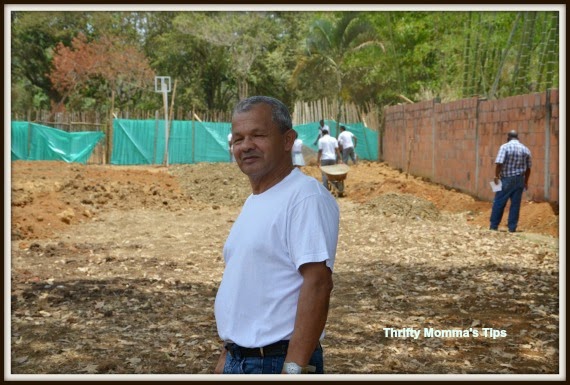
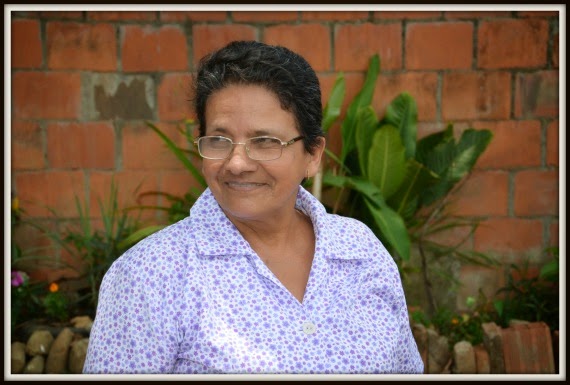



75 Comments
Masshole Mommy
In a country with such a poor reputation, it is wonderful that there is a place like Policarpa. I hope this helps them get lots more sponsorships.
Cyndie
Education is key no matter wher you live. It is great to see kids in school, despite the challenges they face.
Heather @ Girl Gone Mom
This is awesome to see a positive change. My parents used to sponsor a child and I used to write letters to her.
Growing Up Madison
Sounds like a very dangerous place to live. I actually took a look at World Vision yesterday and hubby and I are thinking of sponsoring a child. I hate seeing kids in distress but glad to see that they are getting help.
Jennifer Williams
Hopefully this school will be the start of things turning around. Drugs ruin too many things for too many people.
Lois Alter Mark
It always amazes me to see the beautiful, smiling faces of children in such terrible conditions. Thanks for raising awareness. I love that Emily Dickinson quote.
Sarah-Louise Bailey
It’s so good to hear how it really does change people – as sometimes I wonder if the money we donate really gets to where we want it to go. x
becca
It’s nice to hear a positive story when sometime all you hear is the bad.
Coolmoms Cooltips
So happy to see that efforts by others are paying off in such a beautiful country that has so much to offer
Santander de Quilichao boast beautiful landscape and unfortunately it has seen rough times.
Krystal Butherus
I love that quote. Thank you for sharing your photos of Colombia.
Stefany T
It saddens me so much that children live in places that they are offered heroin and then put in harms way even more when they can’t pay for the drug that they are now addicted to. Thank you for raising awareness of these issues as well as things that can be done to help.
Pam
It’s great to hear about the good that places like Policarpa are doing. Especially in countries with such bad reputations and so many problems.
Ashley B.
Policarpa sounds like a wonderful school. I love seeing how schools can be a source of light for students, and Policarpa is certainly that!
Chrystal Mahan
Education is important no matter where you live or your status. Policarpa sounds like a good school/program. Seems like there should be more of them around the world.
Celebrity VIP Lounge
It is so sad to know that there are people that actually live in fear and have to go day by day in harms way. Thanks for this post. Amber N
Melissa Vera
Wow what a great uplifting post. It is great to see people finding hope in the midst of such turmoil.
Pam
It is wonderful that they are making great progress and things are better for them. Children need to have safe, clean schools so they have a sense of normalcy. Thank you to those that are contributing and helping these kids.
3citygirlsnyc
I love to read about stories that I would not even hear about in the news. Thank you for sharing this. I’m glad to learn about World Vision Canada and read about their success stories.
Danielle
Wow what a wonderful post. The school sounds like a great place and a safe haven for the kids.
Leila
Not sure if my previous comment went through so here is another try! I love how World Vision Canada is bring change and so many positives to the children there. Life must be difficult for everyone young and old. Nice to know the youth are getting the experiences they need to hopefully build a better future for their communities.
Helene Bludman
This is such an uplifting story — it fills my heart with hope for the children of Colombia. Thank you so much for sharing this.
Amanda
What a beautiful post. Awesome work is being done there!!
Mary
Having a school is so important. The children now have a nice and safe space to play and learn.
Everything Mom and Baby
Oh how I hope they get sponsorships!
Danielle
Thanks for this heart felt post! Education should be part number one for all! And it’s wonderful to see how they are pushing forward!
Melissa Pezza
What a great thing they’re doing. Education is important no matter where you are, and I love that they’re helping these kids.
mail4rosey
I love that she showed up to express her thanks. The sponsorships sound wonderful.
Suzanne
I can’t imagine how our youth would react if told they need to build their own gym. Would they rise to the occasion, like the children of Policarpa? I would like to think so.
The photo of the four little girls is just beautiful! They look peaceful and content. Happy to be at school. What is life like for them outside of this safe haven I wonder?
Ruth’s photo and story touched me. For her to want to share her gratitude and say thank you, for the grandson who is now grown, just shows you the impact WVC has made on not just him, but an entire family. That is the true miracle of this work.
Fabulous Perks
I can’t stand it to see or read about kids in distress. It’s great that they are making progress. This was a very uplifting story!
April @ 100lb Countdown
This is a beautiful truth. As much as we take for granted here in the states, there are children with real problems. In the midst of all of the real dangers, the children are hopeful, and one FB group talked about how they wouldn’t let their 10 year olds outside without supervision. I would have to say that this story puts our lives in perspective. Thank you for letting me know some about World Vision. I was unaware of the good that they are doing.
Tough Cookie Mommy
You are absolutely right, kids in this country have no idea how good they have it. I’m glad there is some support system in place for these children.
The Positive MOM
I am from the Dominican Republic, and we have a lot of poverty as well and it is so great to know that many people want to make a difference, and, as you demonstrated, they really do!
Babita@BabsProjects
I like reading this post because it allowed me a glimpse into the lives of these children in Colombia. The sponsorship program looks like something that would benefit these kids a lot.
Melissa
It’s so great that in a place like Columbia, that there’s a place like Policarpa. Kids deserve to be kids & get an education, not fall victims to the crimes around them by way of drugs.
Tammy Mitchell
WV gave Ruth hope. That is worth a smile.
Alice Chase
What a good post! I think it is so important we uplift others in the things we do and write. Thanks for sharing!
Jessica Parks Wiese
What a great story. Sometimes you need to read something like this to realize how good you have it.
Matthew Tully
Many times, hope is all a person has. I’ve never been in their situation but have been in tight situations….can’t even begin to know what it’s like and help any way I can.
Mami2jcn
What an interesting post. My mother is Colombian and I lived there for 2 years as a child. I haven’t gone back since 1996 for a visit because I fear the crime there. I don’t remember Cali being the worst city, however. Perhaps things have changed since I last visited.
Mami2jcn
Sponsoring children is a great idea. If you can help just one child, you can make a big difference in their lives.
a owens
I think this is so awesome, I am going to look into this more. Beautiful young women!
Mami2jcn
It is such a shame that the drug trade has poisoned a country as beautiful as Colombia. It’s good to see an organization such as this one trying to change things.
Skees
The quote you have at the top of this post seems to summarize your entire excursion beautifully. I love how the high school students are helping the elementary school by building a gymnasium.
Mami2jcn
My mother lives in Colombia (as do all of her relatives, including my grandmother and uncles) and I always worry about their safety.
Jennifer Robbins
Wow. Thank you for sharing this story. I had no idea about this. I am glad that children in the area have the resource of the Policarpa school.
Mami2jcn
I’ve heard other stories of organizations from the US and Europe going into help Colombian villages. It’s so great of them to volunteer to help children in need.
Jennifer Robbins
I love the photos you took! They really captured the people and give a real feeling of hope, which is reflective of what the school is for the children in the area.
Mami2jcn
I like the idea of the older kids helping the younger ones.
Mami2jcn
Having lived 2 years in Colombia as a child, I am well aware of conditions there. Thank you for writing this post to raise awareness and let others know what life is like in other countries. We are very blessed to live in North America.
Jennifer Robbins
I think it is great that the Policarpa school offers after-school activities, to encourage children in extra-curricular activities, and keep them from other activities, such as drug usage.
Mami2jcn
My mother lives in Medellin, Colombia, and she is involved with a charity there that helps children and was founded by an American. The volunteers come from other countries to help. It’s a great cause.
Mami2jcn
I love the Emily Dickinson quote. There is always hope in a better tomorrow.
Jennifer Robbins
It is neat that the children are involved in building the school’s gymnasium. I think it helps them take ownership of their school, and also gives them transferable life skills. I wish the conditions were better for them though, and I’m glad there are organizations helping out.
Mami2jcn
There is definitely a huge gap between the rich and the poor in Colombia. We are lucky to live in a country where there is a very large middle class.
Mami2jcn
I didn’t know that Santander De Quilichao and Medellin are the two biggest regions of Colombia struggling with this domestic heroin problem. My mother, grandmother, uncles and cousins live in Medellin.
Jennifer Adams
I love the Emily Dickinson quote you opened up this blog post with. Very beautiful, and applicable.
Mami2jcn
Amazing how much we take for granted. This is the only school in the area with basketball nets and a place to play…we have basketball courts all around us that we don’t even give a second thought to.
Jennifer Adams
It’s amazing to hear that the area the school is located in, use to be a “war zone of sorts”. It’s interesting how much can change, and how big an impact a little bit of hope can make.
Lynn Mathieu
Scary to hear that they are still in a drug and gang area but it does sound like the program has had a good impact on the community as a whole.
Christy Eldred
We really are so lucky to live where we live. I am glad that there is at least this place of positivity and safety for those that need it.
Mami2jcn
When I was 7 I spent some time living in Colombia after my parents’ divorce. My grandmother taught me how to read and write in Spanish and I attended 2nd grade in Medellin. One of the things my grandmother would tell me that has always stuck with me is that I should never wear jewelry out in public. She warned that thieves wouldn’t hesitate to cut off a finger to steal a ring or to slice a ear to grab an earring. I was always very scared of riding public buses there because of my grandmother’s warnings.
Lee-Ann
It still amazes me that in the year 2014 we have these issues. I applaud all those that bring this to the forefront, and one day, I hope we are never needed to advocate, publicize issues such as these because there will be none.
Doris Humber
This is a very moving blog post. Education is so important.
Mami2jcn
It’s wonderful that by sponsoring a child, the funds are pooled to help out entire communities.
Margarita Ibbott
I love this post. I look at the pictures and realize it is a place I know well yet don’t know at all. I look forward to reading all of your posts on Colombia.
koala_tea
I love how the older students are being given skills as well as an education.
Mami2jcn
Reading this article makes me worry about my extended family in Colombia. My mother, grandmother, uncles and cousins live there.
Lee-Ann
I hope to be able to do this one day myself.
Mami2jcn
Colombians in general have a very positive outlook. I’m sure that getting this outside help makes them even more hopeful for the future.
Lori Bazan
What a fantastic and eye opening blog. I often wonder if World Vision changes lives as well as sponsoring a child. It is heart warming to know that it not only affects the child who is sponsored but the whole community!
Mami2jcn
I think this is a great cause to get involved with, especially for those who have the means to travel.
Mami2jcn
As a child living in Colombia, my mother was actually a sponsored child. When she became an adult living in the United States, she gave back by sponsoring a child herself.
Kristine Ewald
Wonderful I have two sponsor children 🙂
Mami2jcn
I did some googling and I discovered that the school is named after a person, Policarpa Salavarrieta. She is considered a heroine of the independence of Colombia. November 14 is the “Day of the Colombian Woman” in honor of the anniversary of the death. My mother’s family is Colombian and I never knew about Policarpa.
mrdisco
now that’s a great way to teach good values in our kids